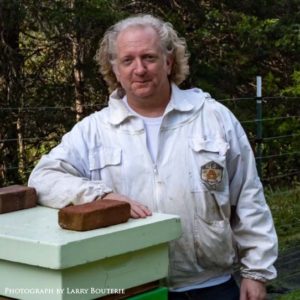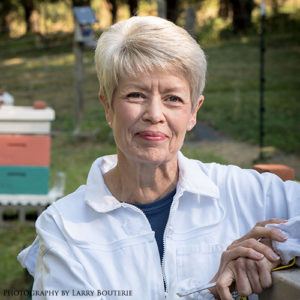SUPPORT. PROTECT. PRESERVE.
We have joined several neighboring properties, including Monticello, in establishing beehives to increase the viability of local honey bee populations, which are currently under stress. Our participation in this project is for ecological stewardship and, in future years, a more fully interpreted farm demonstration area. The Highland Bee Project provides an opportunity for community members and visitors to offer their financial support. Donations help defray the costs for bees, hive materials, and fencing.
Suggested levels of support:
$25: HONEY BEE
$50: BEEKEEPER’S FRIEND
$100: HIVE SUPPORTER (maintains one hive for one year)
$500: QUEEN BEE (establishes one of the six hives)
Donations are accepted at the Museum Shop in the form of cash, credit card, or check (made out to: James Monroe’s Highland, memo: Bee Project).
You may also donate online using the link below (select Highland Bee Project Fund 5320):
Donors are the exclusive recipient of a jar of honey gathered in the gardens and produced by bees at the home of James Monroe.
Meet our Beekeepers!
 Paul Legrand
Paul Legrand
Paul Legrand has been a beekeeper for more than 27 years. When he and his wife, Mary, moved to Charlottesville in 2009, he continued his passion for keeping honeybees by starting and maintaining an apiary in 2010 at Monticello. That apiary is located just down the hill from Jefferson’s home. In the spring of 2012, Paul began a second apiary at Tufton Farm, one of
Jefferson’s original quarter farms, which is now home to the Center for Historic Plants. In 2014 Paul added a third apiary, this time at James Monroe’s Highland. He maintains an active career in the financial planning field, while working year-round on this rewarding and worthwhile endeavor. He is committed to helping the apiaries provide valuable pollination services for the gardens of these historic properties and area farms, and to harvesting honey to benefit each institution.
 Dominic Fitzsimmons
Dominic Fitzsimmons
Despite being fascinated by bees since he was a child, it was not until his family settled in Charlottesville that Dominic actually ventured inside a hive. It is here that this Briton – who also lived in London, Beijing, Singapore, and New York – managed to get out of the city smog, breathe easy, and indulge his love of the natural world. After learning at the elbow of Monticello beekeeper, Paul Legrand, Dominic is now a fixture at the Highland bee yard, where the view across the rolling green pastures reminds him of the village he grew up in on the outskirts of London. He finds his role at Highland as one of the most fulfilling of a career that has spanned the music, television, news, publishing, and finance industries. His next duty is ensuring his creepy-crawly-obsessed son gets the bee bug before he hits adulthood.
 Leslie Bouterie
Leslie Bouterie
Leslie Bouterie serves as the assistant beekeeper at James Monroe’s Highland, Thomas Jefferson’s Monticello, and Tufton Farms, and as a ceramics researcher at James Madison’s Montpelier. After moving to Charlottesville from Washington, DC where she worked in museum education and development, Leslie quickly became involved with all three presidential homes in the area. A 2015 summer volunteer stint in the Highland and Monticello apiaries fueled her interest in honeybees, and quickly led to her taking a beekeeping course, attending lectures, doing research, and eagerly committing to further apiary service. Despite the need to carry an Epipen, she is passionate about honeybees and is dedicated to fostering the area pollination project.


